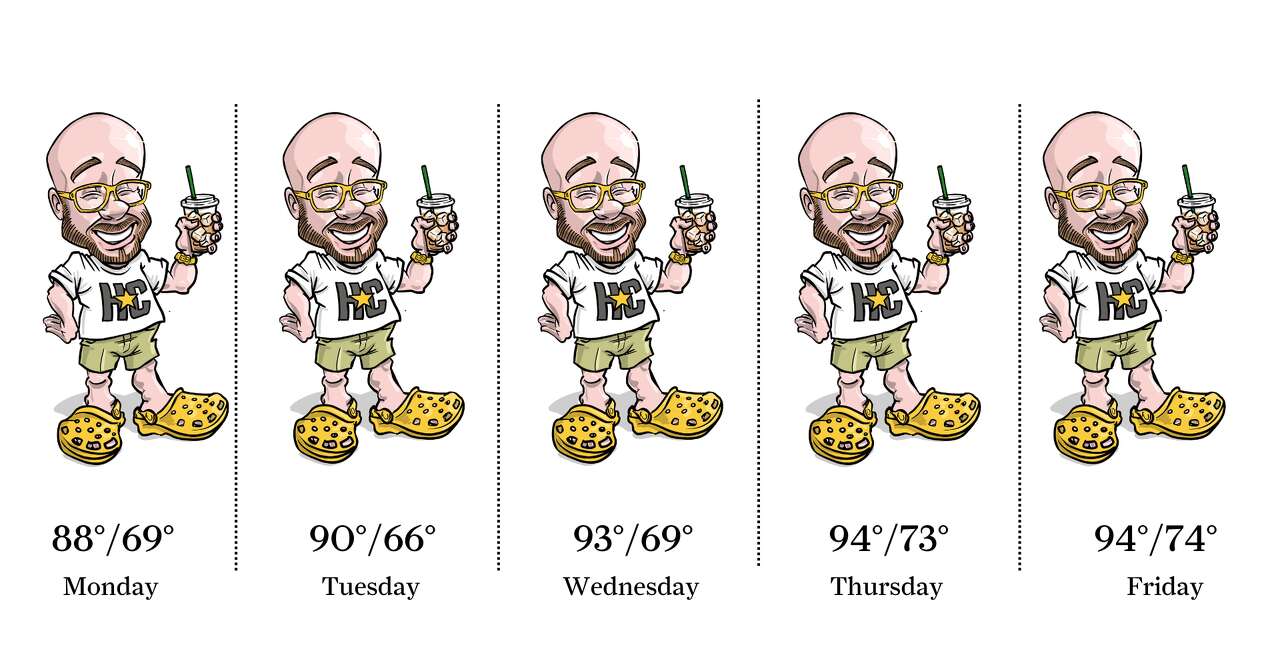SALE! 3 Months for 25¢Access news, guides, puzzles and more. Sale Ends Sept. 14 |
Did you try to flee Houston ahead of Hurricane Rita? We want to hear from you
In September 2005, millions of evacuees flooded highways with traffic to escape Houston ahead of Hurricane Rita, triggering the largest and deadliest evacuation in U.S. history. As drivers jostled for a way inland, they faced hours-long gridlock, fuel shortages, extreme heat, crashes and a deadly bus fire.
Rita’s rain and high winds left as many as seven people dead, according to the National Weather Service, but the chaotic scramble to leave Houston ahead of the storm led to more than 100 deaths.
TELL US: Did you try to evacuate Houston ahead of Hurricane Rita? We want to hear your stories.
 | Roberto Villalpando, Texas Weather Science Editor |
Justin's Five Day Fit Check

Photo by: Ken Ellis
A weak cold front has pushed far enough to allow Southeast Texas a brief sneak peek of fall weather. Monday’s high temperature of 89 degrees may feel like only 87, considering how dry the air is (dew point temps, which reflect how much moisture is in the air, will dip to the upper 50s). Afternoons gradually warm back into the mid-90s by the end of the week. High pressure will limit rain chances through the weekend.
 | Ask a Meteorologist |
The Great Storm of 1900 struck Galveston 125 year ago today: What made it so deadly?
Today is the 125th anniversary of a storm that razed Galveston and is still considered the deadliest natural disaster in U.S. history. It’s estimated that more than 6,000 people died, not only because of the storm’s strength but also from a lack of readiness. The U.S. Weather Bureau, the precursor to today’s National Weather Service, downplayed warnings from Cuban meteorologists, leaving Galvestonians unprepared.
With no radar, satellites or instant telecommunication, residents in 1900 relied on barometers, observation and telegraphed reports. Many didn’t realize the storm’s severity until their homes were surrounded by several feet of storm surge flooding.
Timely communication in disaster response and advances in forecasting have transformed survival odds along vulnerable coastlines. Meteorologists track storms with satellites, radar and aircraft reconnaissance, while computer models project hurricane paths, often allowing populated areas several crucial days to prepare before landfall. Emergency alerts reach phones instantly, and evacuation orders can save thousands.
READ MORE: How the Great Storm of 1900 ruined Galveston — and how the city’s resilience redefined it
Do you have a Houston weather or climate question? If so, you can submit your weather questions to justin.ballard@houstonchronicle.com. They may just end up in a future edition of the weather newsletter.
Something to see

Photo by: Geostationary Operational Environmental Satellites, CIRA And NOAA
As we get closer to the autumnal equinox, when the sun shines equal amounts of light on the planet’s northern and southern hemispheres (and the traditional start of fall), the Earth’s sunrise shadow becomes more perpendicular to the equator. The fall equinox occurs on Sept. 22 this year. This weather satellite photo was taken around 7:20 a.m. in Houston on Monday.
Texas Weather Wonks Trivia
Houston in 2025 has experienced a relatively mild summer with only eight 100-degree days for the year. In 2023, when Houston recorded an annual total of 45 days with triple-digit temperatures, how many occurred in September?
A) 5 days
B) 6 days
C) 7 days
D) 8 days
Hit reply to this email to let us know what your guess is and a chance to win. We’ll let you know who answered correctly first in next week’s newsletter.
Here’s the correct answer to our previous trivia question: Houston’s warmest August, based on averaging both high and low temps, was in 2023. What was that overall average temperature? It’s C) 91 degrees
Other weather news
|
|
|
|
|
Meet the Team

Photo by: Susan Barber
The 713 Weather Radar newsletter is written and produced by meteorologist Justin Ballard and Texas Weather Science Editor Roberto Villalpando. You can reach out to them at justin.ballard@houstonchronicle.com and roberto.villalpando@houstonchronicle.com or by replying directly to this email.
|





